How to create a billion-dollar beauty business
How to Create A Billion-Dollar Beauty Business
For those who are stuck between launching a fashion or beauty brand, take one look at both industries’ bottom lines. While fashion businesses can take an age to pick up steam (often never making it), today’s beauty-focused companies can receive billion-dollar valuations in just a few years.
Image Miu Miu AW19 @ Pat Mcgrath Instagram
Glossier — a brand famed for its effortless aesthetic — was recently valued at $1.2 billion, earning it the illustrious unicorn title. (The moniker refers to any privately held start-up valued at over $1 billion.) Esteemed make-up artist Pat McGrath’s beauty line also hit the billion-dollar mark in 2018, albeit a lot more quietly. And Kylie Jenner was recently proclaimed history’s youngest self-made billionaire by Forbes. Not because of her family’s reality TV show, but because of her ever-growing beauty business.
So what’s the secret to becoming a beauty unicorn? First, build a digital presence. All of the above had some degree of influence before branching out into the business world. Jenner’s is obvious. McGrath, however, built up a loyal Instagram following thanks to her creative runway techniques. Glossier founder Emily Weiss started a blog that accrued millions of readers. The same goes for Huda Kattan; another beauty blogger-turned-CEO whose brand too sparkles with a billion-dollar valuation.
Image @ Glossier
Whether personal or professional, a beauty CEO with a large following can drive sales straight off the bat. Millions of fans means a successful direct-to-consumer strategy and the ability to immediately widen profit margins via free social media marketing. In fact, most fast-growing brands have capitalised on the Instagram generation’s weakness for aesthetically pleasing imagery. Photos, products and packaging can be otherworldly a la McGrath or accessible like Glossier. Both appeal in equal measure.
Weiss’ Glossier is one of the ‘oldest’ of the new guard. Launching in 2014 with a teeny tiny range of make-up, its ethos revolves around boosting women’s natural state instead of playing on their insecurities. It’s this spirit — plus an easygoing nature — that has secured Weiss millions in funding. She actively asks customers for feedback and listens to their desires, but doesn’t rush a release to please the crowd. She opens stores when she knows she has the customer base to pay for it. She has quickly but subtly built an inclusive world; one where people obsess over the exact hue of Glossier pink yet less so on personal perfection.
Pat McGrath Labs falls at the other end of the spectrum. Designed for hardcore beauty fans, the make-up artist’s highly pigmented shadows, highlighters and lipsticks promise a high fashion result. She proves it too, using them for countless shows. But how did a more niche brand reach a billion-dollar valuation in just two years? Well, McGrath has utilised one of the fashion industry’s newer sales strategies: the drop. Traditionally adopted by streetwear labels, it involves building hype around a particular product or collection by announcing its contents and launch date ahead of time. The McGrath mania is clearly working. In July 2018, Eurazeo Brands invested a rather surprising $60 million in her brand. A spot in Sephora stores also drives sales.
Jenner, on the other hand, is believed to have received no outside investment. Using her 130 million Instagram following to drum up interest, she began Kylie Cosmetics in November 2015 with a simple $29 lip kit. The first batch sold out within a minute and listings on resale sites soared. After six weeks, she enlisted the help of Seed Beauty; a company that is now responsible for her research, development, manufacturing and packaging. Her product range has ballooned, her personal net worth has hit billionaire status, and Kylie Cosmetics itself is expected to be worth a billion dollars by 2022, reports WWD.
Forbes credits the 21-year-old’s success to a “miniscule overhead”. She spends nothing on advertising, has a small team and lets another company do most of the work. But even she is hitting a digital wall. Just like all of the aforementioned brands, Jenner has moved to old-fashioned brick-and-mortar. She has trialled pop-up stores and, in November 2018, released Kylie Cosmetics in Ulta Beauty stores across the US. ($54.5 million worth of products were sold in the first six weeks, states Forbes.)
However exciting it sounds, exponential growth has its downsides. Namely, that it can’t last forever. In the summer of 2018, The Business of Fashion reported that a burst in the beauty bubble was almost inevitable. Valuations are getting higher and higher, putting pressure on businesses to build sales and awareness at the same pace as previous years.
Some are struggling. According to Forbes, Kylie Cosmetics only demonstrated single-digit growth in 2017 and 2018 compared to a zero to $307 million jump in its launch year. Take into account the introduction of tons of new products and shades throughout that period and it’s a little worrying.
To stay in the game long-term, beauty businesses must embrace the old and new. Digital works, but there comes a time when physical stores — preferably international ones — will need to be added to the mix. Starting with one core product (like Jenner’s lip kits and Rihanna’s diverse Fenty Beauty foundation range) works, but an expansion will be due.
As countless more beauty brands enter the domain, companies shouldn’t assume that an online-only customer base will remain loyal. To keep them coming, you’ve got to keep them engaged. Glossier’s model does just that: the company recently introduced a playful make-up collection and has just unveiled a Miami pop-up store.
It’s the one to follow. For now, anyway.
Written by Lauren Sharkey


